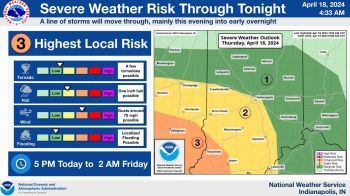(CNN) — The Biden administration is in the final stages of identifying specific military units it wants to send to Eastern Europe and writing up the military orders in an effort to deter Russia, which has massed tens of thousands of troops on the border with Ukraine, according to multiple US and defense officials.
No final decision has been made, but CNN reported that President Joe Biden discussed options for bolstering US troop levels in the Baltics and Eastern Europe with his top military officials during a briefing at Camp David on Saturday, according to a senior official.
The potential troop deployments come amid US warnings that a potential Russian invasion of Ukraine could be imminent. The State Department on Sunday reduced staffing at the US embassy in Kyiv, Ukraine, with the departure of nonessential staff and family members out of “an abundance of caution.”
Biden will hold a secure video call with European leaders on Monday afternoon, which the White House said was part of the administration’s consultation and coordination with European allies in response to Russia’s military buildup.
One option the Biden administration is considering is moving between 1,000 to 5,000 troops, both to shore up Eastern European and Baltic allies and so they are available to help get American citizens out, if necessary, according to a senior defense official.
The goal of sending military reinforcements to Eastern Europe would be to provide deterrence and to reassure allies, and there’s been no suggestion US troops would deploy to Ukraine or take part in any combat roles.
The US sent two weapons shipments to Ukraine over the past week as part of recently directed security assistance to help bolster Ukraine’s military.
NATO countries are also sending additional ships and fighter jets to Eastern Europe and putting forces on standby, NATO Secretary General Jens Stoltenberg said in a statement Monday.
“NATO will continue to take all necessary measures to protect and defend all Allies, including by reinforcing the eastern part of the Alliance,” Stoltenberg said.
The Ukrainian Defense Ministry’s latest intelligence assessment found that Russia has now deployed more than 127,000 troops in the region, while US officials have said Russia is in a position to launch an invasion at any time.
US officials still don’t know what Russian President Vladimir Putin plans to do, or if he has decided to invade Ukraine. But some officials who have seen the intelligence say there is evidence Russia is planning to try to take Kyiv and overthrow the government, as CNN has previously reported.
The UK foreign office said in a statement on Saturday that it has information the Russian government is planning to “install a pro-Russian leader in Kyiv as it considers whether to invade and occupy Ukraine.”
Moscow denies it is planning to invade, accusing the US and NATO of escalating tensions over their support for Ukraine. The Kremlin on Monday dismissed the reports about plans to install a pro-Russian leader in Ukraine as “hysteria.
“Tensions are escalating due to concrete actions taken by the US and NATO,” Kremlin spokesman Dmitry Peskov said. “I mean, the informational hysteria that we are witnessing. It is generously framed by a huge amount of false information, just lies and fakes.”
State Department officials told reporters Sunday that the decision to reduce staffing at the embassy was not due to any change in threat levels to US personnel in the country. The officials said the move to reduce embassy personnel and urge Americans in the country to leave was in part because State Department assistance would be “severely impacted” if there is Russian military action in Ukraine.
In addition to the US reducing staffing at its embassy in Kyiv, the UK Foreign Office also announced Monday that some British Embassy staff and dependents were being withdrawn in response to growing threats from Russia.
The US is continuing to engage diplomatically with Russia, but recent talks have failed to bring about any breakthroughs. Russia has said that the US and NATO must commit to never admitting Ukraine into NATO and pull back military deployments from Eastern European counties, including Romania and Bulgaria. The US has said repeatedly these demands are a non-starter, though Secretary of State Antony Blinken said last week the US would respond in writing to Moscow’s demands following his meeting with Russian Foreign Minister Sergey Lavrov.













